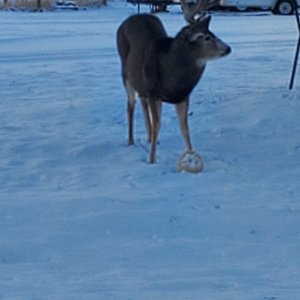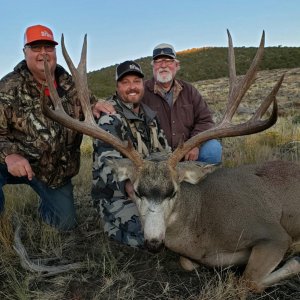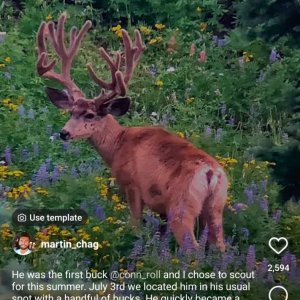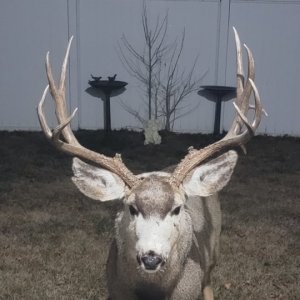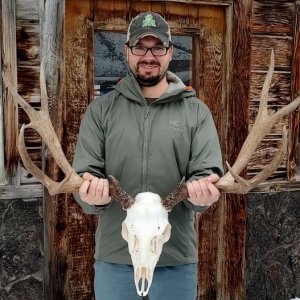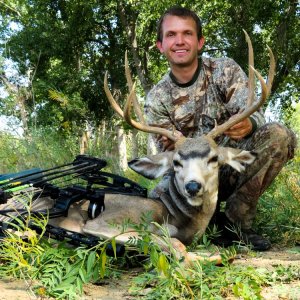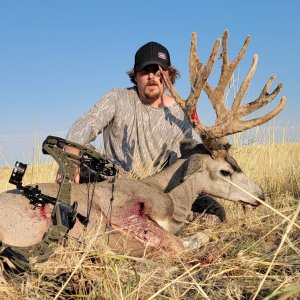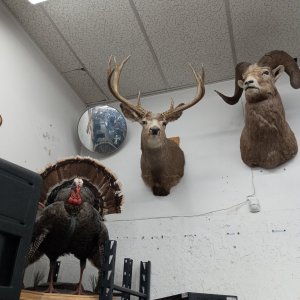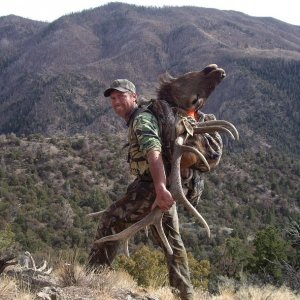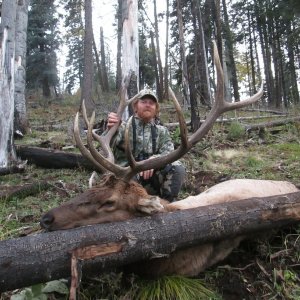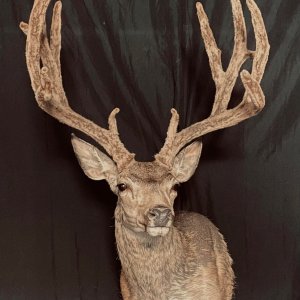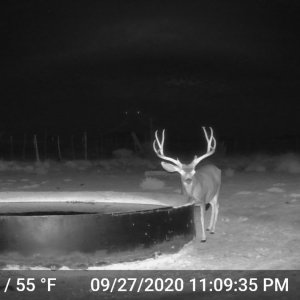Here's an interesting article about the collaborative effort in Wyoming to control cheatgrass in the fall of 2020 where the Mullen fire burned approximately 176,877 acres. They anticipate treating approximately 17,000 acres of cheatgrass over multiple years.
Medicine Bow-Routt National Forests & Thunder Basin National Grassland - News & Events
www.fs.usda.gov
Aerial cheatgrass spraying planned for Mullen wildfire area
Release Date: Jun 17, 2021
The coordinated effort will take place over an eight-week period.
Media Contact: Aaron Voos, 970-819-2898
(LARAMIE, Wyo.) June 17, 2021 – The U.S. Department of Agriculture, Forest Service (USFS) and the Wyoming Game & Fish Department (WGFD) are planning to treat cheatgrass on 9,200 acres within the 2020 Mullen wildfire area through the aerial application of the herbicide Rejuvra, with the goal of reducing or even eradicating this species on many burned areas.
Aerial spraying with a helicopter is scheduled to begin June 20 on the Medicine Bow-Routt National Forests. Treatment units are located along the western slope of the Snowy Range, primarily in Wyoming but also in a portion of the area that burned in Colorado.
Treatment will take place over an eight-week window; however, herbicide application is weather-permitting and could result in full, partial, or no-spray days.
Recreationists along the North Platte River and its’ tributaries should be aware of the planned spraying. On-the-ground signage has been posted along with maps. Short-term closures are possible during the project pending treatment timing.
The helicopter will be based out of Saratoga, Wyo. with various staging areas throughout the Forest or adjacent BLM lands, determined by the area currently being treated.
The emphasis is on controlling non-native, annual cheatgrass on critical big-game winter ranges, enhancing native vegetation species, stabilizing soils, and reducing erosion. Treating cheatgrass also greatly minimizes the risk of a second wildfire in this area by the reduction in fine fuels and diminishes the threat of shorter fire intervals in the future.
In the fall of 2020, the Mullen fire burned approximately 176,877 acres. This aerial treatment is intended for high-risk areas where the spread of cheatgrass could allow it to become established as dominant plant species.
Aerial treatments of cheatgrass have previously proven successful on the Medicine Bow National Forest, on burned areas from the 2012 Squirrel Creek fire and the 2018 Badger Creek Fire.
“It is great to continue collaboration efforts with our partners on controlling invasive species in the footprint of the Mullen Fire. Our past treatments have proven to be successful in managing cheatgrass, which is a huge threat to native ecosystem recovery post wildfire.” said Jackie Roaque, Rangeland Management Specialist for the Laramie Ranger District. “We are optimistic that there will be the same success with this project, and at an even larger scale than in the past.”
The Mullen cheatgrass project has received in-kind, monetary, and collaborative support from the following entities: USFS, WGFD, Colorado State University – Natural Resource Ecology Lab, United States Geological Survey, Muley Fanatics Foundation, University of Wyoming, Wyoming Wild Sheep Foundation, Rocky Mountain Elk Foundation, Wyoming Wildlife and Natural Resource Trust, National Fish and Wildlife Foundation, and Wyoming Governor's Big Game License Coalition. The collective support for treating invasive species following the Mullen fire is valued at over a million dollars and with such we anticipate treating approximately 17,000 acres of cheatgrass over multiple years.
Cheatgrass is a particularly aggressive invasive species that many agencies and landowners in the western United States are struggling to control. It is a prolific seed producer, thrives in disturbed areas and can displace native plants within grass and shrubland communities.
The ability to spray aerially on the Mullen Fire area is a result of the 2015 Record of Decision for Invasive Plant Management on the Medicine Bow-Routt National Forests and Thunder Basin National Grassland.
Specific questions about the project should be directed to Jackie Roaque (USFS), 307-745-2340 and Ryan Amundson (WGFD), 307-331-0787.
Fire recovery is a USDA Forest Service - Rocky Mountain Regional priority, and local Forest objective in 2020. Emergency stabilization and post-fire restoration work, such as cheatgrass spraying, is underway.
Additional resources can be found on our
website. Information is also available on social media:
@FS_MBRTB on Twitter or
@FSMBRTB on Facebook.
-USDA-
